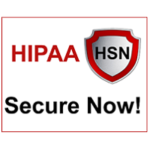Taking a break from who is hiring and who was hired, we rounded up some reading on the state of the healthcare workforce. Like many things in our lives for the past two years the pandemic has taken a toll on it. The healthcare workforce might be on the top of the list of disruption. With 18% of healthcare workers having left their jobs and another 12% being laid off, what are the solutions for healthcare as a whole? You can’t open a paper, magazine, or watch news and not hear about the crisis that has evolved. Here are some insights and reports.
To Listen
From our Podcast Network, The Handoff: What’s next for nurses at the country’s largest public health system
The guest on this episode oversees more than 8,000 nurses in her role as the Senior Vice President and Chief Nurse Executive for NYC Health + Hospitals. In this conversation, host Dan Weberg and Natalia Cineas talk about what’s next for the country’s largest public health system coming out of the most acute phase of the pandemic.
Like so many other nurse leaders, one of the things that’s top of mind for Natalia is recruiting, and she shares how she’s trying to bolster her nursing workforce and encourage nurses to think about a career in a public system. She also shares why she’s thinking differently about informatics these days, how her approach to staffing and benefits is changing and what she thinks other health systems can learn from NYC Health + Hospitals.
In the News
Motivo Health Closes $14M Series A to Solve Shortage of Mental Health Therapists
Motivo Health (@motivohealth), the first marketplace connecting mental health therapists with clinical supervisors online, has raised $14M in Series A funding led by Cox Enterprises with participation from SteelSky Ventures and Great Oaks Venture Capital. This investment allows Motivo – which was founded by licensed therapist Rachel McCrickard in 2018 – to carry out its mission of providing accessible, affordable clinical supervision to aspiring therapists.
AmeriCorps and CDC Seek Americans to Join Next Generation of Public Health Leaders
AmeriCorps (@AmeriCorps), the federal agency for national service and volunteerism, released a Public Health AmeriCorps public service announcement highlighting the agency’s initiative to address the COVID-19 pandemic and related public health issues, as well as support the recruitment, training and development of a new generation of public health leaders.
HHS Invests Nearly $60 Million to Strengthen Health Care Workforce and Improve Access to Care in Rural Communities
The U.S. Department of Health and Human Services (@HHSGov), through the Health Resources and Services Administration (@HRSAgov), announced investments of nearly $60 million to grow the health workforce and increase access to quality health care in rural communities, including nearly $46 million in funding from President Biden’s American Rescue Plan. The Biden-Harris Administration is committed to improving health outcomes and promoting health equity in rural America. In 2021, thanks to President Biden’s American Rescue Plan, the Department of Health and Human Services invested over $16 billion to strengthen rural health – PDF.
AristaMD Selects Axuall to Streamline Workforce Deployment with Real-Time Provider Data Network
Axuall (@AxuallProof) announced that AristaMD (@Arista_MD) selected Axuall to streamline the onboarding, privileging and payor enrollment process, as well as provide its contracted specialists with the tools to manage the company’s digital credentials through Axuall’s real-time provider data network.
Patient safety and access to care are critical problems that the U.S. healthcare space continues to face in terms of scale and flexibility. As the clinician shortage continues, reducing the unnecessary burden and time commitment of paperwork will help address the national imperative to decrease burnout and drop-out rates among healthcare professionals. Healthcare organizations, like AristaMD, are beginning to realize how data and analytics can be applied across the provider community to help solve this problem through an emerging practice: workforce intelligence.
Addressing Nursing Shortages: Options for States
Exacerbated by COVID-19, the nation has faced a shortage of health care professionals for years, with nurses being one of the hardest-hit professions. Nursing shortages brought on by an aging population, aging workforce, nurse burnout, long wait times for licensure approval and extended work hours not only strain health care systems but also affect patient care and overall outcomes.
In response to this national shortage, states have examined a variety of options to recruit and retain nurses. Specific policy levers include loosening licensing requirements, changing scope of practice laws, bolstering educational programs, and offering monetary incentives. This National Conference of State Legislatures (NCSL) brief explores policy options states can use to address nursing shortages. HRSA’s National Organizations of State and Local Officials Cooperative Agreement provided support for this NCSL resource.
To Read
10 Things LTC Leaders Should Know About Nursing Home Staffing Shortages – By Megan Williams, Business Writer for IntelyCare (@IntelyCare) – Despite struggling with post-COVID symptoms, Director of Nursing, Sylvia Abbeyquaye was called back to work. Eventually, she turned in her letter of resignation without a new job lined up. Her story paints a picture of the grim reality of staffing shortages in nursing homes. Almost three years have passed since the start of the pandemic and things don’t seem to be turning around; a survey by the American Health Care Association (AHCA) and National Center for Assisted Living (NCAL) published in September 2021 revealed that essentially every nursing home (99%) and assisted living community (96%) in the United States is dealing with a staffing shortage.
As you address the impact of staffing shortages in your nursing homes, this overview of critical statistics can be helpful in finding a way forward and taking advantage of emerging opportunities.
To Retain Nurses and Other Staffers, Hospitals Are Opening Child Care Centers – By Lauren Sausser, Kaiser Health News (@KHNews) – When Jennifer Lucier and her husband found out they were expecting a baby in 2016, they immediately made three phone calls. The first was to her mother. The second was to her husband’s family. And the third was to the Roper St. Francis Healthcare Learning Center. That last call, she felt, was particularly urgent. Lucier wanted to secure a spot for her unborn infant on the day care’s long waiting list.
Assisted Living Staffing Ratios Need an Update to Keep Up With One Exploding Demographic – By Megan Williams, IntelyCare (@IntelyCare) – As the number of Americans over the age of 65 increases and life expectancies lengthen, assisted living facility (ALF) administrators will be some of the most heavily impacted. This means that establishing and maintaining optimal assisted living staffing ratios will become increasingly important. Let’s look at why they’re so critical and how you can get in front of this coming trend.
Resources
 Staffing Resource Center
Staffing Resource Center
MGMA
Twitter: @MGMA
With physician burnout on the rise and engagement on the decline, it can feel like there’s nothing you can do to combat the staffing shortage impacting the healthcare industry. Check out their list of best resources to help you restore your staffing levels and make it through the twilight of this pandemic. You can do this, and we’re here to help.
 2022 Healthcare Workforce Rescue Package
2022 Healthcare Workforce Rescue Package
All In WellBeing First for Healthcare
Twitter: @AllIn4WellBeing
Two years into a global pandemic, healthcare team members are in crisis. Leaders are bombarded with competing messages about how to support them and address workforce shortages. A group of experts in collaboration with the National Academy of Medicine identified the top five actions leaders should take to support team members now. These evidence-based actions can be initiated within 3 months and build a foundation for a long-term system well-being strategy.
 Remote Workforce and HIPAA
Remote Workforce and HIPAA
Twitter: @HIPAASecureNow
Whether a change in your business structure came about from the pandemic, or it just makes more sense for your team, remote work is the norm for many more professionals today than it was in years past.
If you’re in healthcare, this means that you need to factor in the HIPAA component as well as cybersecurity to protect you, the business, and your patients.

